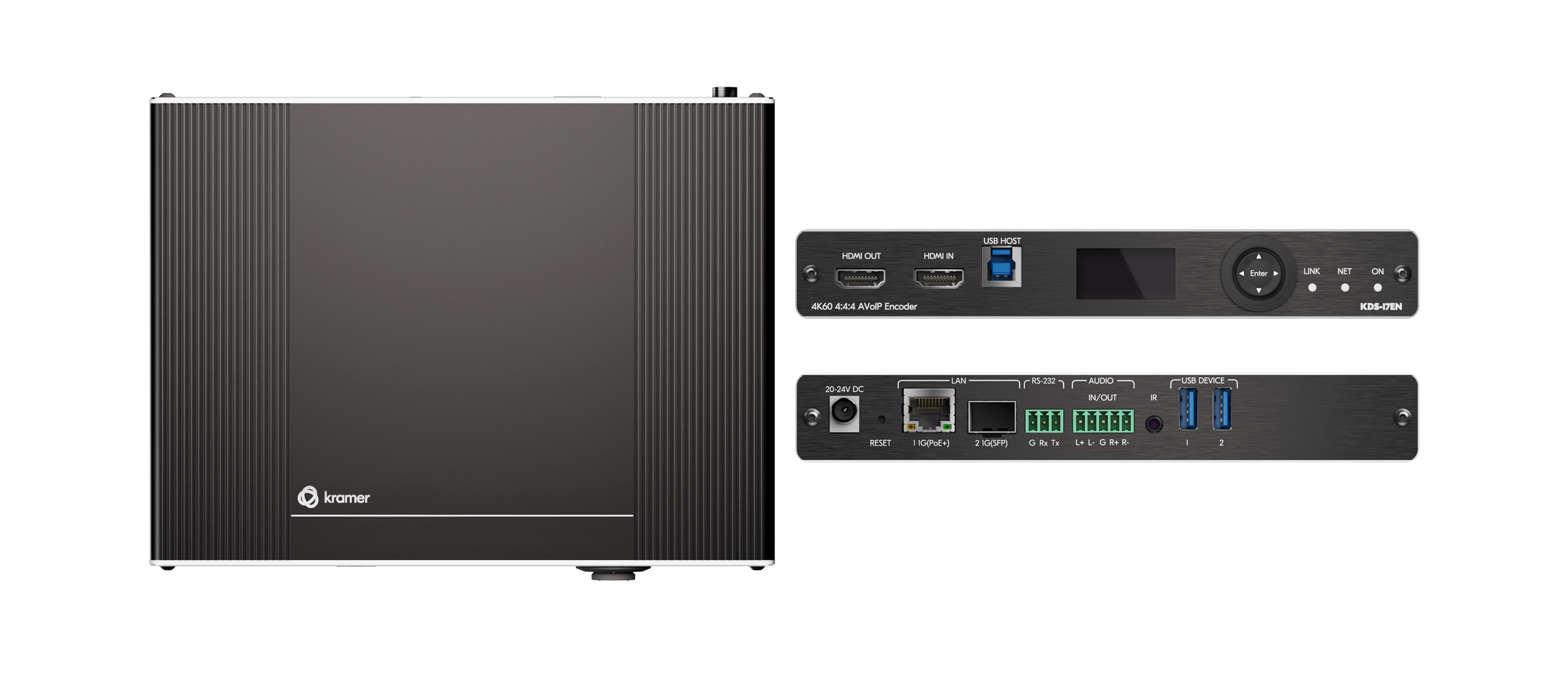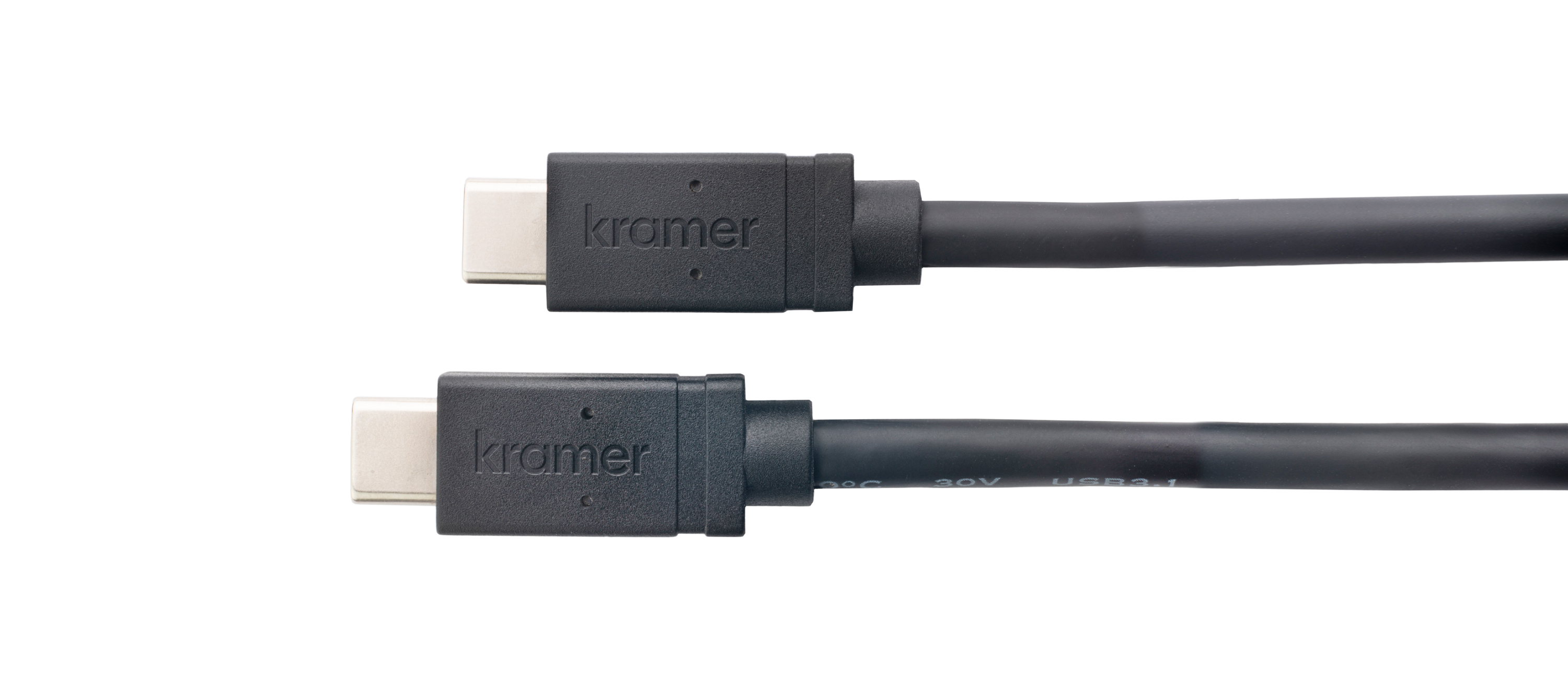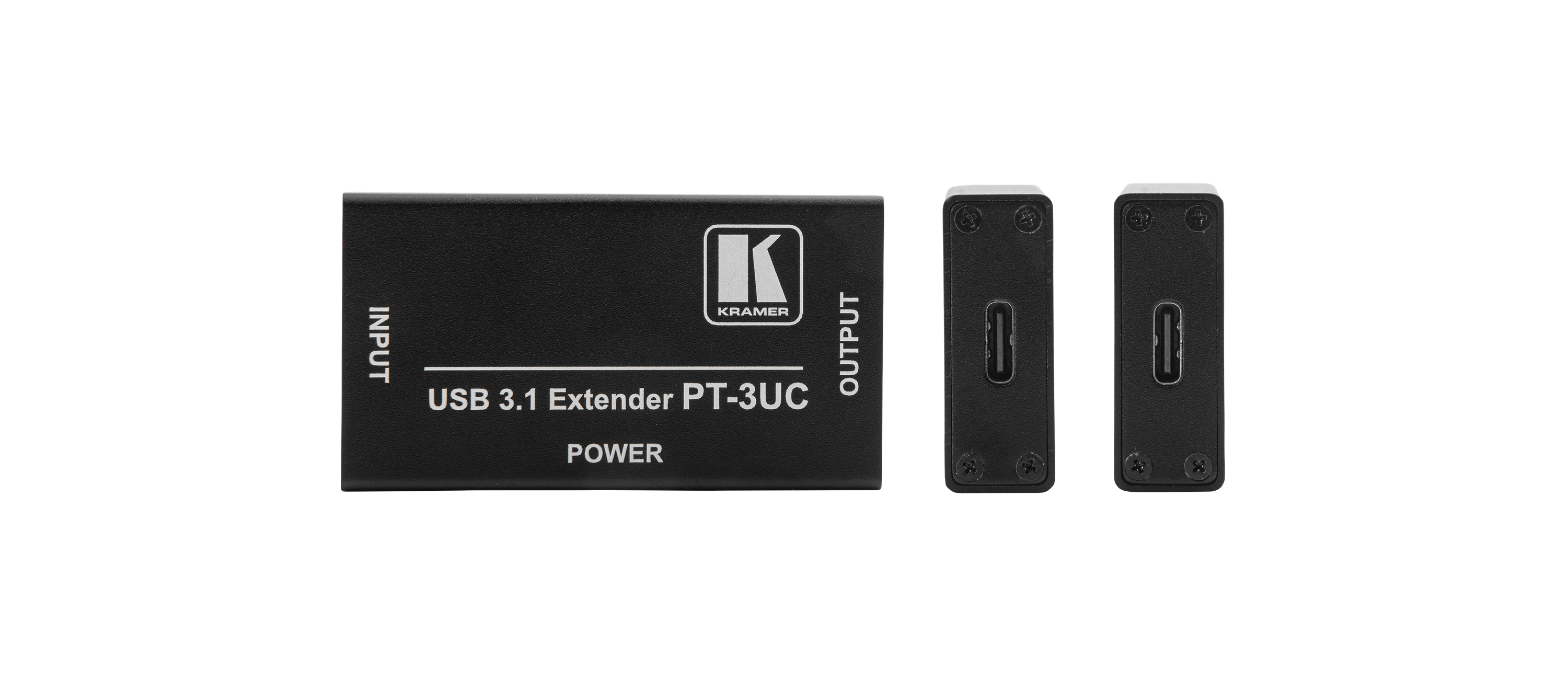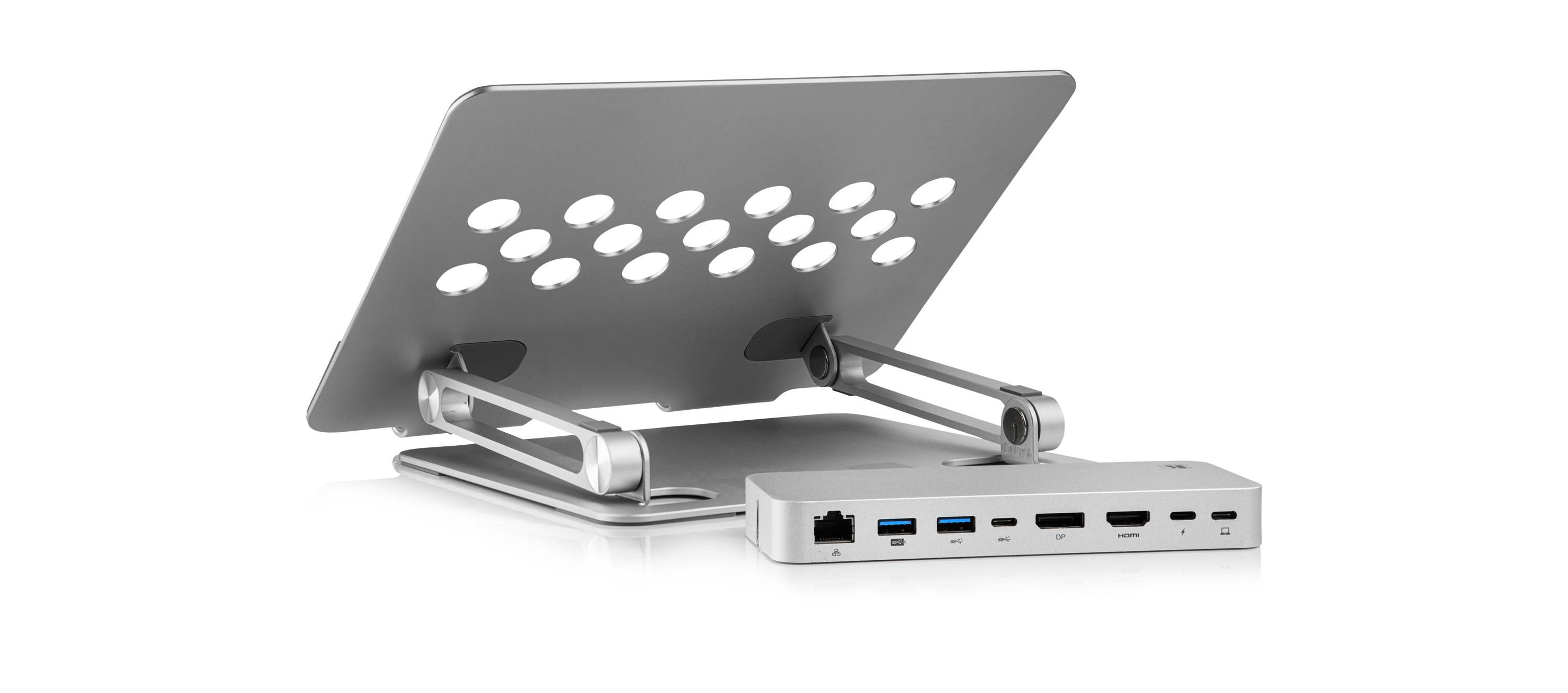Kramer Connectivity Solutions: AV over IP and USB-C Technology
The 2024 Kramer KwAVe Tech Tour was a dynamic and informative event catering to audiovisual (AV) industry professionals. We were pleased to hold the event at our Experience Center in Winter Park, Florida. Knowledge is power, and with a focus on technical excellence, this half-day educational session provided a platform for networking, learning, and exploring the latest AV trends led by industry experts.
Chris Kopin (Executive VP of Technology Development): With over two decades at Kramer, Chris is the guiding force behind product innovation and market relevance.
Travis Cawthorne (Director, Products & Training): Travis specializes in AV system design, training, and network integration. His insights are invaluable for anyone navigating the AV landscape.
Attendees explored AV over IP (AVoIP) and USB-C Technologies. Whether you were a seasoned professional or a curious newcomer, this session provided valuable insights and practical know-how, allowing every one to harness fundamental information about Kramer's IP Technology and USB Devices.
AV over IP Technology
AV over IP refers to transmitting audio-visual data over a network, such as a LAN (Local Area Network), WAN (Wide Area Network), or Internet. Unlike traditional AV distribution systems that rely on dedicated cables and specialized hardware, AVoIP utilizes standard network equipment to transmit and switch video and audio signals.
Key Attributes and Advantages of AV over IP Technology
Scalability and Flexibility:
AV over IP systems are highly scalable and flexible. IP-based solutions allow dynamic switching and adaptability, unlike matrix switches, which have fixed configurations. Dynamic switching refers to a system or network's ability to adjust its configuration, behavior, or routing based on real-time conditions or changing requirements. Adaptability refers to a system's ability to respond effectively to changes in its environment or requirements.
Ethernet-based packet-switched networks enable multiple services and users to share the same infrastructure. In traditional Ethernet networks, data is divided into smaller units called packets or frames. These packets are switched and routed dynamically through the network based on destination addresses. Unlike circuit-switched networks, where a dedicated path is established for each communication, packet-switched networks allow multiple devices to share the same communication channel. Ethernet-based networks provide a shared infrastructure where various services and users coexist harmoniously:
- Data Services: Regular data traffic (web browsing, file transfers, emails) share the same Ethernet infrastructure.
- Voice over IP (VoIP): Real-time voice communication runs alongside data traffic.
- Video Streaming: High-quality video streams (such as video conferencing or streaming services) coexist with other services.
- Internet of Things (IoT): Sensors, intelligent appliances, and security cameras share the same Ethernet network.
- Virtual LANs (VLANs): Segmentation allows different groups of users or services to share the same physical infrastructure while maintaining logical separation.
Cost Efficiency of AVoIP Designs:
AVoIP deployments can reduce system costs by up to 40% compared to similar HDBaseT systems. As the Ethernet industry scales, cost savings are expected to grow significantly over time. Here are some examples:
- Reduced Cabling Costs: AVoIP uses standard Ethernet cables, minimizing installation time and expenses.
- Infrastructure Savings: It leverages existing network infrastructure, avoiding costly specialized AV switches.
- Consolidated Management: AVoIP allows data and AV traffic to be handled on the same network, improving efficiency.
- Compression and Security: Consider compression for high-resolution content and ensure network security.
Compression Techniques Using Encoders and Decoders:
A codec is a critical component in the world of multimedia. It stands for "compression-decompression" and serves as both an encoder and a decoder. The encoder takes raw audio or video data and compresses it. It's like an author writing a book—creating a concise representation of the content. The decoder does the reverse. It takes the compressed data and recreates an approximate version of the original audio or video for playback.
Each compression scheme can be implemented differently, resulting in various codecs for the same scheme. Compression is the process of reducing file size by eliminating redundant information. It's similar to packing a suitcase efficiently. In the context of audio and video, compression schemes play a crucial role. They define how data is compacted. Commonly used compression schemes include:
- 264 (AVC) and H.265 (HEVC):
- 264 (AVC): Also known as Advanced Video Coding, it has been widely used since 2003. It's a video compression standard that significantly improved upon its predecessor, MPEG-4. H.264 efficiently compresses video data, making it suitable for streaming, storage, and broadcasting.
- 265 (HEVC): H.265, also known as High Efficiency Video Coding, is the latest international standard for video compression. It was introduced in 2013. HEVC builds upon H.264 and offers even better compression performance. It's crucial for 4K and higher-resolution video.
- JPEG 2000:
- JPEG 2000 is an image compression standard and coding system developed as a successor to the original JPEG standard. Unlike traditional JPEG, which uses a discrete cosine transform (DCT), JPEG 2000 employs a wavelet-based method.
- Key features of JPEG 2000:
- Scalability: The codestream obtained after compression is scalable, allowing for different levels of resolution or signal-to-noise ratio.
- Lossy Compression: JPEG 2000 uses lossy compression, but excessive compression can lead to stuttering video.
- Applications: It's used in digital cinema, medical imaging, and other fields where high-quality images are crucial.
- BlueRiver NT (SDVoE):
- BlueRiver NT is an industry-standard technology developed by Semtech for Software Defined Video over Ethernet (SDVoE). It allows equipment from different manufacturers to interoperate.
- SDVoE combines the power of Ethernet with the flexibility of software-defined networking (SDN). It allows efficient transmission of uncompressed 4K video, audio, and control signals over standard Ethernet networks.
Commercial AV Applications:
AV over IP opens up new possibilities, including:
- IPTV (Internet Protocol Television): Streaming TV content over IP networks.
- Digital Signage: Dynamic display of multimedia content.
- Streaming: Real-time audio and video distribution.
Latency Considerations:
Latency is the time between when the encoder captures a video frame and the instant that frame is displayed through the decoder. Generally, the more compression, the higher the latency. Bandwidth, the range of frequencies that pass over a given data transmission channel, is inversely proportional to latency. In other words, the greater the bandwidth, the more information can be sent in a given time interval or the smaller the latency. Several factors contribute to latency:
- Network Congestion: Similar to a congested road causing traffic delays, an overcrowded network can lead to data transmission delays.
- Quality and Speed of Network Devices: The performance of switches and routers directly affects data flow. High-quality, fast components are essential to prevent bottlenecks.
- Effective Data Packet Handling: AVoIP manufacturers and network component makers collaborate to optimize data packet encapsulation and conversion and minimize latency.
Kramer's Commercial AV Solutions for AVoIP
Kramer’s AVoIP solutions offer a versatile and scalable portfolio for 1GB AVoIP streaming, which is ideal for various enterprise, education, and government applications. Their range includes a variety of decoders, auto-switcher encoders, and a dedicated manager device, all designed to deliver a seamless end-user experience with 4K resolution and USB-C connectivity. The KDS family stands out for its robust security features, ensuring the integrity and confidentiality of IT networks. With no AV expertise, these solutions can be easily integrated into any IP network, making them a market leader in AVoIP streaming. Kramer’s commitment to innovation and excellence is evident in their KDS line, which offers efficiency, reliability, and high-quality streaming tailored to meet the specific needs of any AV-enabled space.
KDS-100: This dual-engine AVoIP streaming device offers 4K60 4:2:2 resolution with H.264/H.265 standards and is designed for real-time, high-quality video presentations. It features low latency, low bandwidth requirements, and dual streaming capabilities, making it ideal for operations rooms, auditoriums, and command centers. The KDS-100 supports up to 1000 video sources, is bandwidth-efficient, and provides an advanced yet intuitive management system.

KDS-17: Redefines AVoIP streaming with 4K60 4:4:4 resolution, JPEG 2K, ultra-low latency, and support for Dante and AES67 audio standards. It includes USB connectivity and fast switching and is suitable for command centers, meeting rooms, and video walls. The KDS-17 line offers a comprehensive set of encoders, decoders, switchers, and wall plates, supporting up to 1000 video sources and advanced networking options.
KDS-7: This product delivers AVoIP streaming with 4K30 4:4:4 resolution, JPEG 2K, and low latency. It also includes USB support and rich management capabilities. The KDS-7 range includes encoders and decoders, supporting up to 999 video sources. It is scalable for any network AV installation size and ensures a superb user experience with enterprise IT-grade security and intuitive management.
Each product in the KDS series is tailored for scalability and efficiency, catering to the diverse needs of enterprise, education, and government applications. They offer seamless integration into existing IT networks, providing a superior user experience and robust security features for any integrator.
USB-C Technology
USB-C is a 24-pin USB connector system representing a breakthrough in connectivity technology. Its reversible design simplifies the connection process, eliminating the need to align the plug orientation with the port. USB-C supports various protocols, allowing it to serve as a data cable and a power source, delivering up to 100 watts of power, which is sufficient to charge laptops and other devices. It can also transmit DisplayPort, HDMI, VGA, and other video signals, making it a versatile option for audio-visual applications. With data transfer speeds of up to 10 Gbps with USB 3.1, USB-C is poised to become the standard for future devices, offering a one-cable solution for multiple functions. This innovation heralds a new era of convenience, efficiency, and simplicity in consumer and professional electronics.
Key Attributes and Advantages of USB-C Cables
High-Speed Data Transfer:
USB-C achieves high-speed data transfer by using multiple lanes and advanced encoding. It supports speeds up to 40Gbps and the latest standards like USB4 and Thunderbolt 3/4. It allows for fast, bidirectional data exchange, making it ideal for transferring large files quickly.
Power Delivery:
USB-C Power Delivery (PD) is a charging protocol that uses the USB-C connection to deliver higher power levels to devices. It allows for up to 100W of power to be passed, enabling the charging of larger devices like laptops, tablets, and smartphones. The technical aspect of USB-C PD involves a negotiation process between the power source and the receiving device. This negotiation ensures that the correct amount of power is delivered safely, preventing damage to the device’s battery or circuitry.
The protocol can dynamically adjust the voltage and current levels depending on the device’s needs, varying from 5V at 2A for smaller devices to 20V at 5A for larger devices. This flexibility makes USB-C PD versatile and efficient, as it can cater to a wide range of electronic devices with different power requirements.
USB Versatility:
USB-C’s versatility stems from its ability to support a wide range of protocols over a single connector. Technically, the USB-C connector is a 24-pin double-sided interface that simultaneously handles data, power, and video/audio signals. It supports USB standards like USB 3.1 and USB4, which enable high-speed data transfer and power delivery, as well as alternate video output modes, such as DisplayPort and HDMI12.
The connector’s design allows for flippability, which enables it to be inserted in any orientation, enhancing ease of use. USB-C’s compact size makes it suitable for thinner devices, while its robust construction ensures durability. Its universal nature aims to replace various connectors, moving towards a single standard for all devices, simplifying the user experience, and promoting device interoperability23. This adaptability makes USB-C a powerful and flexible interface for modern technology needs.
Compact and Durable:
USB-C’s compactness and durability are achieved through its innovative design and construction. The connector is small, allowing for slimmer device profiles, and its 24-pin configuration is encased in a robust metal shielding that provides structural integrity. This design supports many insertion cycles, typically rated for 10,000 uses, indicating its durability. The pins are coated with gold or nickel to resist corrosion and maintain a reliable connection over time123. The internal components are also tightly packed and precision engineered to withstand daily wear and tear, making USB-C compact and durable for modern electronic devices.
Kramer's USB and Connectivity Solutions for the AV Market
Kramer’s CONNECT USB-C family is a comprehensive suite of USB-C cables designed for various applications. They ensure high-quality video, data transfer, power, and Ethernet connectivity. The cables are available in multiple lengths and support 4K60 video, 10 Gbps data speeds, 60W charging, and more, making them suitable for any distance and use case. They are versatile, standards-compliant, and offer full USB-C feature access, including vendor-agnostic interconnectivity and compatibility with global standards.
The CONNECT USB-C range includes passive, active, and AOC cables, each tailored to specific needs, ensuring cost-effective solutions. The unique Kramer K-Lock feature provides secure connections, resisting disconnections due to pulling forces. The products are reliable, with rigorous testing and quality control, ensuring smooth signal transfer and interference-free performance, even in EMI-sensitive environments. Built with high-quality materials, these cables promise durability and compliance with safety standards, offering a dependable USB-C solution for any setup.
Kramer CONNECT USB-C cables streamline the user experience by offering a single cable solution that supports all USB-C functionalities. This approach reduces costs, minimizes clutter, and simplifies the complexity of connectivity. The cables fully comply with USB-C standards, enhancing installation, setup, daily use, and maintenance processes. Kramer’s solution is designed to declutter workspaces and reduce the hassle of multiple cables, ensuring a clean, efficient, and cost-effective connectivity environment.

C-U32/FF: A full-featured USB 3.2 Gen 2 passive cable that supports 10Gbps data transfer, 4K60 video, and 100W charging. It features a K-Lock mechanism for secure connection and is available in 3- and 6-foot lengths.
CA-U32CAF/D: Similar to the C-U32/CA, this active extender cable supports 10Gbps data transfer and 4.5W charging. It has a USB-C male to USB-A female configuration and is available in 10 ft and 15 ft lengths.
CLS-AOCU32/D: An active AOC USB 3.2 Gen 2 extender cable supporting 10Gbps data and 4.5W power, with USB-C male connectors, available in lengths from 10 to 50 ft.
CLS-AOCU32/H: is a specialized USB 3.2 Gen 2 active AOC extender cable for video, supporting 4K60 video. It has USB-C to HDMI male connectors and ranges from 15 to 98 ft in length.

PT-3UC: This USB 3.2 Gen 2 compliant cable offers 10Gbps data transfer, 4K60 video, and 4.5W charging. It also has signal buffering and is backward compatible with USB 2.0 and 1.1.
AD-UCF/UCF: is a full-featured USB 3.2 Gen 2 Type-C female to Type-C female adapter that supports 10Gbps data, 4K60 video, and 60W charging.
AD-U32CAF/D: is a USB 3.2 Gen 1 Type-C male to Type-A female adapter that supports 5Gbps data and 15W charging.
K-SPIDER: An active multi-format input to HDMI output adapter cable, supporting 4K60Hz video, with auxiliary power through a USB connector and multiple input options.
AD–RING–11 & AD–RING–12: Stainless steel ring adapters for DisplayPort/Mini DisplayPort/USB-C male to HDMI female, supporting up to 4K resolution for USB-C connections.
KDock-5 is similar to KDock-3 but supports 4K60 HDMI and DisplayPort outputs, includes additional USB 3.2 Gen 1 data and charging ports, and features a headset+mic port.

KDock-6: An ergonomic laptop stand with integrated connectivity options, including 4K60 HDMI and DisplayPort outputs, USB 3.2 Gen 1 data and charging ports, an Ethernet port, USB-C charging pass-through, and a headset+mic port, making it a comprehensive workstation solution.
KRT-4-U32/FF: A USB-C cable retractor designed for tidy cable management, offering 10Gbps data transfer, 4K60 video support, and 60W charging capability, ensuring a clean and efficient workspace.
TS-UCA: A TBUS power socket module that provides USB-C and USB-A charging ports, supporting USB-C Power Delivery (PD) at 30W and USB-A Quick Charge (Q.C) 3.0 at 30W, ideal for modern power needs.
TS-2UCA/U: A dual socket TBUS power module featuring one US AC power socket and two USB charging ports, supporting USB-C PD at 30W and USB-A Q.C 3.0 at 30W, offering versatile power solutions for various devices.
These products enhance productivity and connectivity in modern workspaces, providing high-speed data transfer, multiple video output options, and efficient charging capabilities.
One Last Consideration
Kramer covers a wide range of applications. At times, we get caught up in a project's scope and focus on the entire AV over IP solution and AV devices instead of all the tools that a single USB-C cable provides. Taking the extra time to educate yourself on the miscellaneous cables, wallplates, integration tools, and docking stations will only help extend your ability to provide quality service and insight. If you missed the first set of KwAVe Tech Tour stops in Florida, you can check out where Kramer is stopping next and see if you're available to join the roadshow. Kramer also offers virtual webinars that are frequently updated on their Webinar Series landing page, as well as a CTS qualifying Certification Summit that will be launched later in 2024. If you have any questions about Kramer or its products, please do not hesitate to contact your Mainline Representative.
